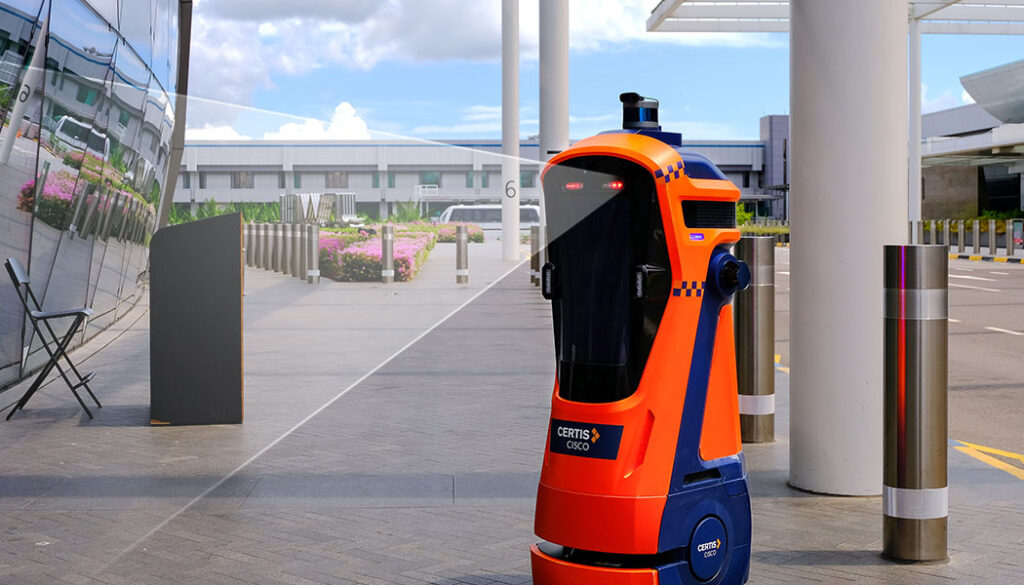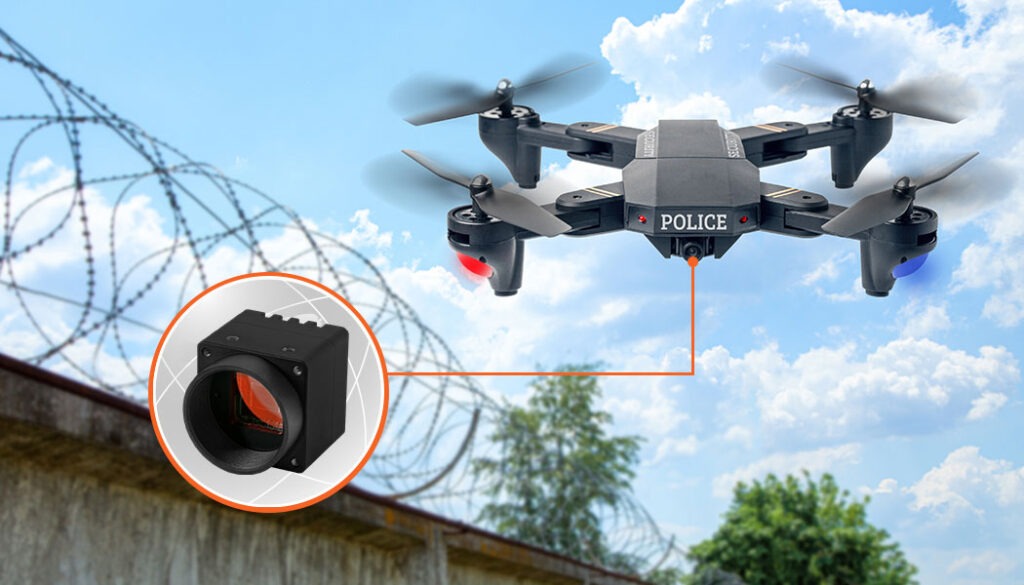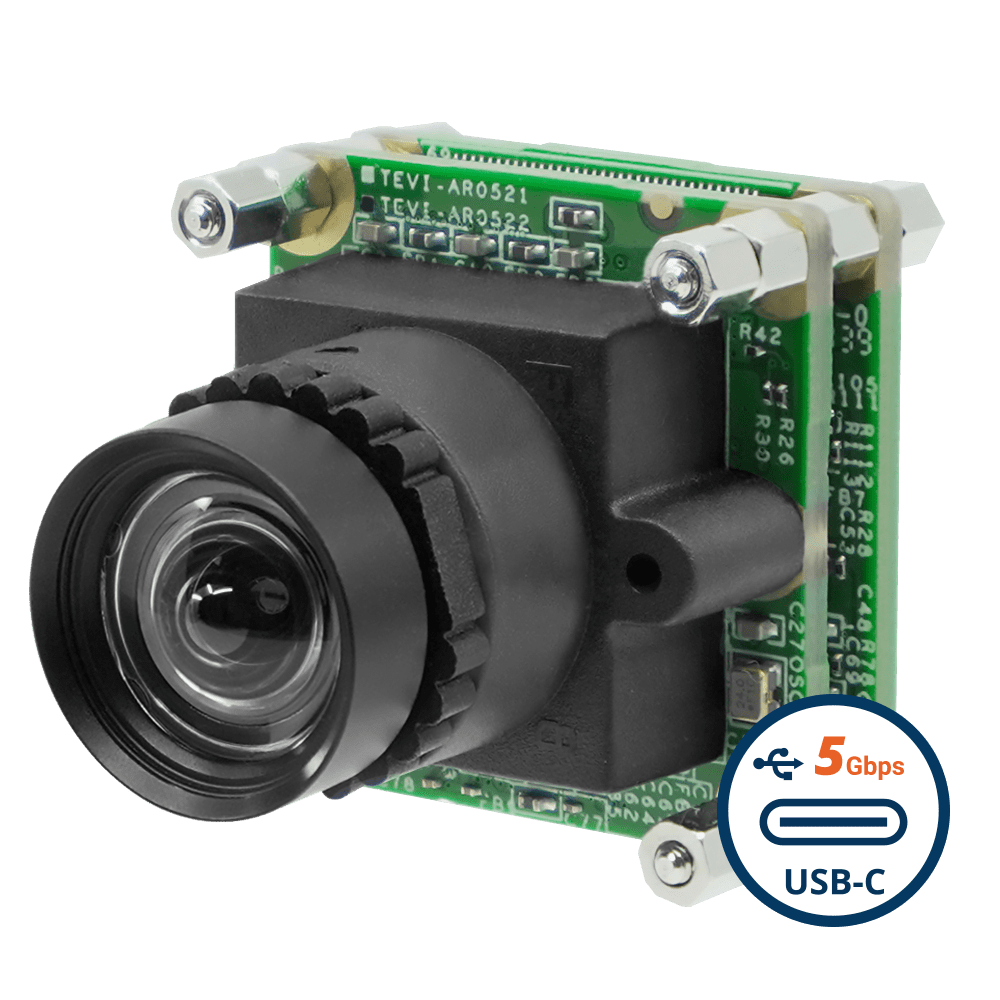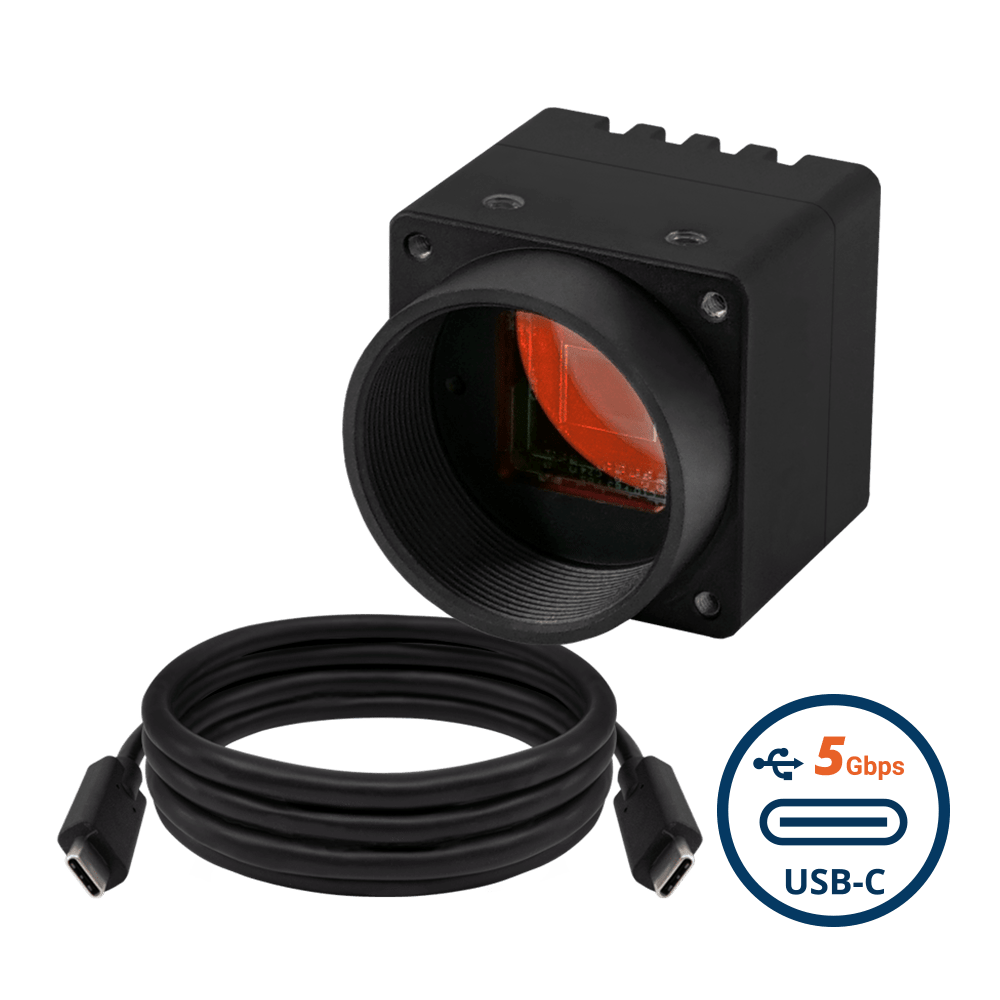Cameras have become an inevitable part of our lives. Today, we see the world through the eyes of cameras and lenses. While consumer applications like mobile and digital cameras are the most familiar forms of imaging for a common man, there is a large world of vision on the industrial and commercial side that plays a great role in building smart technologies.
Examples of such applications include:
- Robots
- Smart traffic cameras
- Surveillance systems
- Medical diagnostic systems
- Assistive devices
- Laboratory equipment
Camera modules used in these systems help us uncover details that are otherwise not visible using the naked eye. For example, in a retina scanner, the camera module helps to capture the retina and inner parts of the eye for careful examination by the ophthalmologist.
Of the different types of cameras used in commercial, industrial, and medical applications, NIR cameras find a unique place due to their high sensitivity in the Near Infrared spectrum. In the NIR range (0.76 to 1.4 micrometers), many details that cannot be seen under visible light can be captured. This is a huge advantage in many embedded vision applications, especially safety and security systems.
In this article, we explore the world of NIR cameras and learn why they are well-suited for new-age security and surveillance systems.
What are NIR cameras?
NIR cameras come with high QE (Quantum Efficiency) in the NIR region. A higher quantum efficiency means that the camera sensor has the ability to convert more photons into electric signals. This in turn means that a camera with a high QE in a particular wavelength range can produce high-quality images in that spectrum.
For instance, TechNexion offers cameras based on the AR0521 as well as AR0522 sensors from Onsemi. Look at the below graph to understand how the sensors compare with each other when it comes to quantum efficiency.
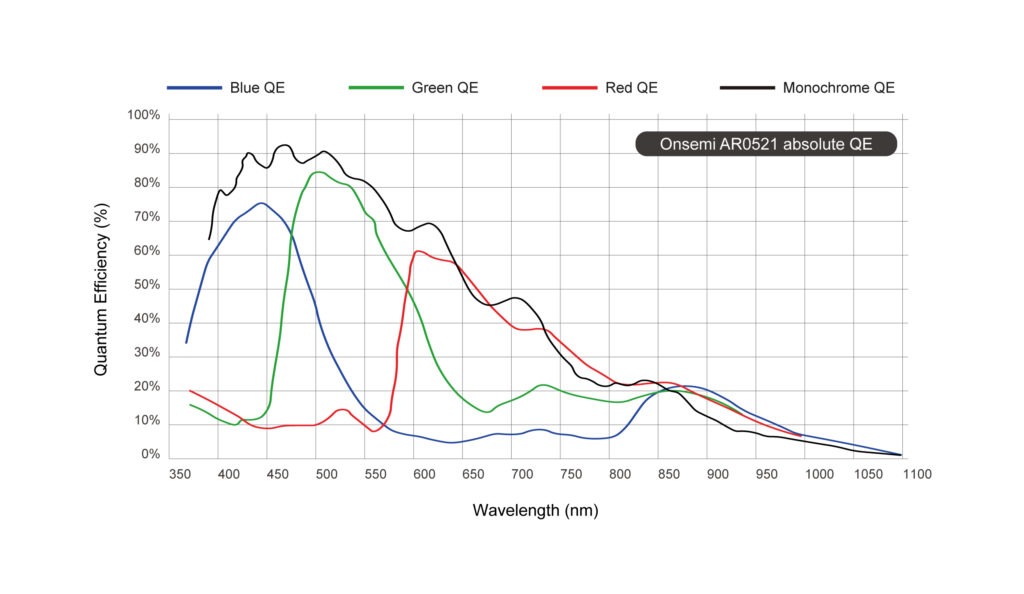
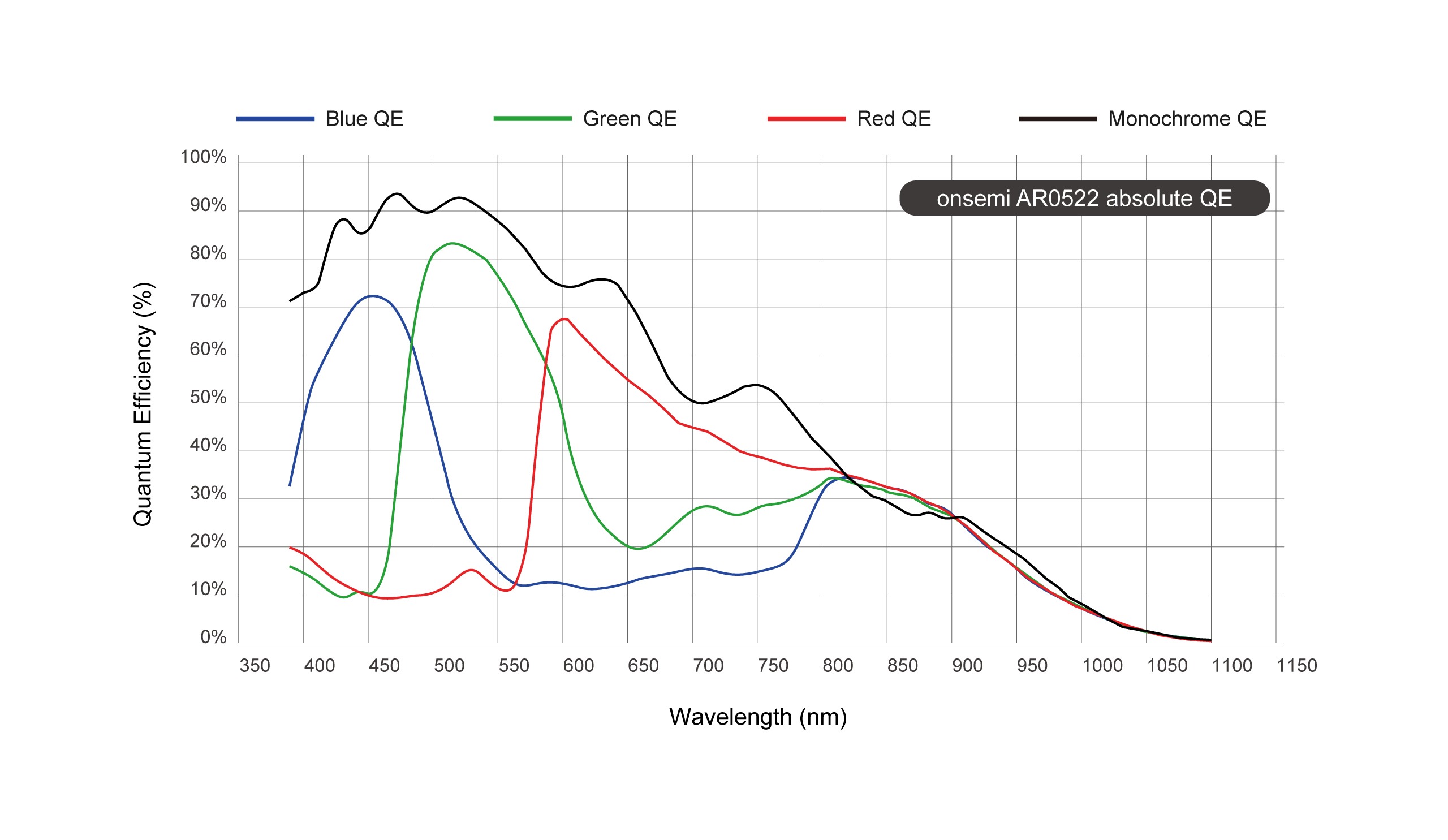
QE comparison of onsemi’s AR0521 and AR0522 sensors
In short, NIR cameras are optimized to perform well in the Near Infrared region, making them suitable for a wide variety of embedded vision applications.
Why are NIR cameras suitable for night vision applications?
At night, it is difficult to capture certain details even with an external light source that uses the visible spectrum. Moreover, you will have to use multiple light sources to receive adequate light. Due to this, cameras that are sensitive only to visible light will not serve the purpose.
In such a scenario, NIR cameras are a better alternative. With the help of a single IR light source, NIR cameras can capture clear images even under 0 lux conditions. For applications that involve imaging at night, cameras like VCI-AR0522-CB from TechNexion are recommended since they come with near IR enhancement for outdoor and night vision applications.
How NIR cameras enhance safety and security
Camera-enabled security systems like smart surveillance devices have less margin for error when it comes to detecting theft, intrusion, or the presence of unwanted objects or people. Relying on visible light cameras is not a wise decision in this case. Unlike them, NIR cameras can effectively capture images and videos at night and in low light conditions with all the necessary details.
The level of clarity and detail that an NIR camera produces is difficult to achieve with a visible light camera. With more details, security professionals can ensure that they have clear visibility into the area under surveillance. Automated smart surveillance cameras can also ensure that the AI and ML algorithm has all the necessary details in the footage to detect any anomalies or unwanted presence in the scene.
Embedded vision applications where NIR cameras enhance safety and security
NIR cameras are used in a wide variety of industries including retail, medical, research, industrial, etc. Here, let us focus on applications where they are used for ensuring the safety of humans, buildings, and other assets.
Smart surveillance
We briefly touched upon how NIR cameras enhance surveillance systems. Modern surveillance systems are not just used for manual surveillance. They come with enhanced features such as automated monitoring that is made possible with the integration of AI and machine learning capabilities.
For example, a smart surveillance system equipped with NIR cameras can detect the presence of a human in the scene, even at night. It can then send an alert instantly to the security personnel for any necessary action. A smart surveillance camera can also detect the presence of vehicles or animals, thereby ensuring the complete safety of the premises.
Patrol robots
Patrol robots work like security professionals walking around a building or premises to ensure there is no security breach. They have the ability to navigate autonomously with the help of depth cameras and 3D sensing. They are used for security and surveillance in locations such as:
- Mines
- Military bases
- Large warehouses
- Powerplants
- Corporate buildings
- Educational institutions
Patrol robots have to operate at night. This means that they cannot rely on visible light for image and video capture. Instead, they have to use cameras with high sensitivity in the NIR spectrum. With this, the AI and ML algorithms will be able to accurately detect different objects in the scene.
Drones
Drones are also used for security purposes, especially in military environments. Military drones have to operate 24×7. In addition, they often have to face adverse weather conditions such as rain, snow, fog, etc. These elements restrict the visibility of their cameras. NIR camera modules can help overcome this challenge to some extent by capturing images in the Near IR region.
During security operations, drones might also be required to analyze the ground for the presence of any undesired materials like mines or bombs. NIR cameras in combination with ground penetrating radars fitted on the drone can make this possible. In short, NIR cameras serve as a valuable asset in security drones.
Smart traffic systems
Smart traffic systems use cameras for vehicle counting & detection, automatic number plate recognition, people counting, and passenger recognition. They enhance safety in the following ways:
- By detecting lane violations, thereby preventing accidents.
- Spotting vehicle speeding on highways and traffic signals.
- Catch license plates of stolen vehicles.
All these tasks require the smart traffic camera to capture images and videos under low light conditions. NIR cameras are a better alternative here compared to visible light cameras.
Animal monitoring
NIR cameras can not only be used for human safety but for animals too. Surveillance cameras are used in national parks and wildlife sanctuaries for functions such as:
- Analyzing animal behavior, breeding patterns, and migration activities.
- Offer a remote animal viewing and bird-watching experience for the public.
In addition to these, surveillance cameras can also be used to ensure animals don’t encroach into each other’s zones. This can prevent the mixing of animals and avoid unwanted attacks. Monitoring using cameras can also ensure that humans don’t enter the habitat and cause any disturbance to animals.
For further reading: How Embedded Vision can Enable Remote Animal and Bird-watching
The future of NIR cameras in enhancing safety
With advancements in sensor technology, the quantum efficiency of camera modules in the NIR region will certainly go up in the coming years. The future will also see better use of artificial intelligence and machine learning in security systems. Though the application of AI and ML has already begun, the technologies are still not mainstream and are yet to see widespread adoption.
Some of the other developments that could happen with respect to the use of NIR cameras in embedded vision are:
- The use of NIR cameras alongside other types of cameras like 3D depth sensing cameras. This will primarily happen in autonomous vehicles.
- Higher adoption of RGB-IR cameras where the sensor comes with both RGB and IR pixels. Here, a single camera can capture images in both visible and Near IR regions. This will help product developers build more compact and cost-effective vision systems.
- With the increase in the quality of NIR cameras, more applications could emerge where they can be used. 3D photogrammetry in medical treatment is a good example.
TechNexion – NIR cameras for the present and the future
TechNexion has been in the embedded systems space for more than 2 decades now. Our focus on being a one-stop shop for our customers is what led us to develop embedded vision cameras, which include Near IR enhanced cameras too. They are specially designed for outdoor applications like surveillance and robotics. They can also be used in other medical and industrial applications where NIR imaging can enhance the overall effectiveness of the system. Visit our embedded vision page to learn more about our portfolio of cameras.
Related Products
- What are NIR cameras?
- Why are NIR cameras suitable for night vision applications?
- How NIR cameras enhance safety and security
- Embedded vision applications where NIR cameras enhance safety and security
- The future of NIR cameras in enhancing safety
- TechNexion â NIR cameras for the present and the future
- Related Products
Get a Quote
Fill out the details below and one of our representatives will contact you shortly.


